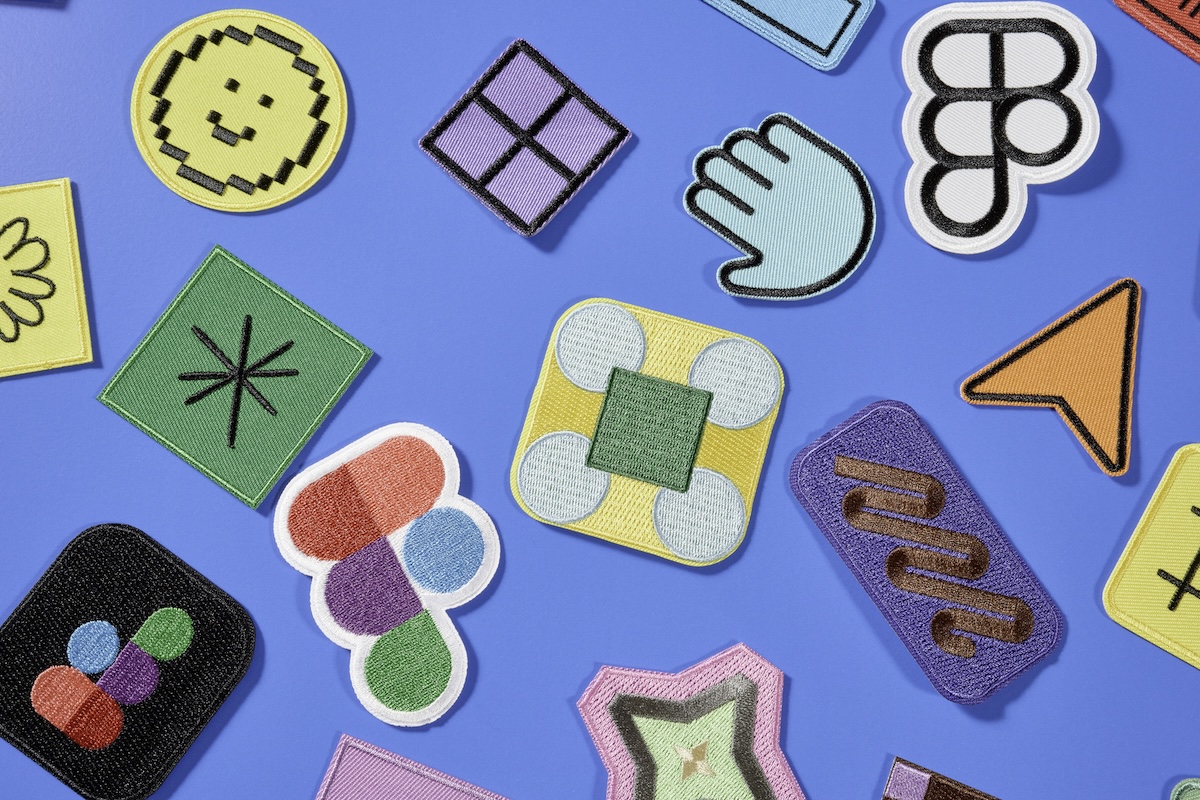From design to website, from sketch to illustration, from prompt to app - Figma is significantly expanding its platform with the new products Sites, Make, Draw and Buzz. The presentation at this year's Config showed that Figma is not only further developing functions, but also rethinking software in the context of an entire ecosystem. How can - and must! - design tools function in a creative working environment that is becoming increasingly non-linear, collaborative and complex? Against this backdrop, the conference, with its diverse keynotes on design, technology and everything in between, became one thing above all: a declaration of love for craftsmanship.

"The future of the economy is also the future of design"
The platform, which once began as a low-threshold browser-based UI tool, is increasingly becoming an all-round operating system for collaborative design. With its latest product offensive at Config 2025 in London, Figma shows that design processes can not only become more efficient, but also freer and more versatile - especially for interdisciplinary teams like the ones our readers lead or accompany today. The keynote speech by Dylan Field, CEO of Figma, set the tone: It wasn't about small improvements. It was about taking a step into the future of work, creativity and the economy itself. "The future of business is also the future of design," explained Field. "We want Figma to be a place where ideas become products, where high standards and excellent craftsmanship come together on a networked platform."
Field emphasized that over two thirds of Figma users are not designers, and that the majority of all users are outside the US, with around 40% in Europe. The platform is responding to this with increased localization and a more global cultural orientation - "the culture and history of design are deeply rooted in Europe," he noted, citing Jan Tschichold's groundbreaking designs, for example, and thus setting the tone - and sees contemporary, modular design as a consistent continuation of relevant design traditions.
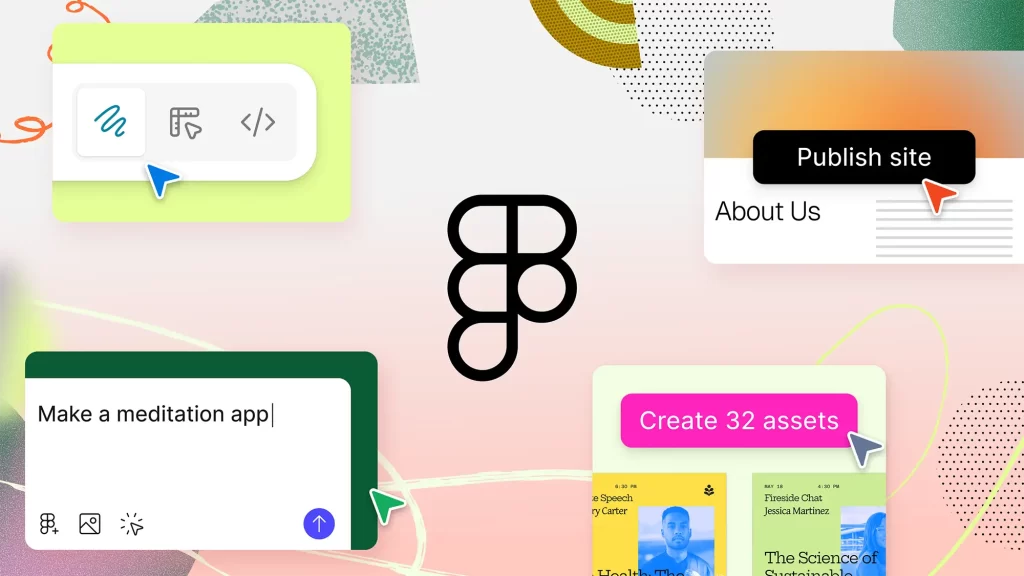
One idea, four new tools
Chief Product Officer Yuhki Yamashita described Figma's new offerings as a complete end-to-end solution: from brainstorming and coordination to realization and storytelling.
Figma Sites: From design to the web - directly from design
For many designers, Figma has so far been the place where screens and components are created. With Sites, this space has now been expanded to include the final step: publication. What previously had to be handed over to web developers or implemented via third-party tools can now be done directly in Figma - with responsive layouts, code components and even AI-generated interactions. Ideal for agencies, studios or individuals who want to think about design and implementation from a single source.
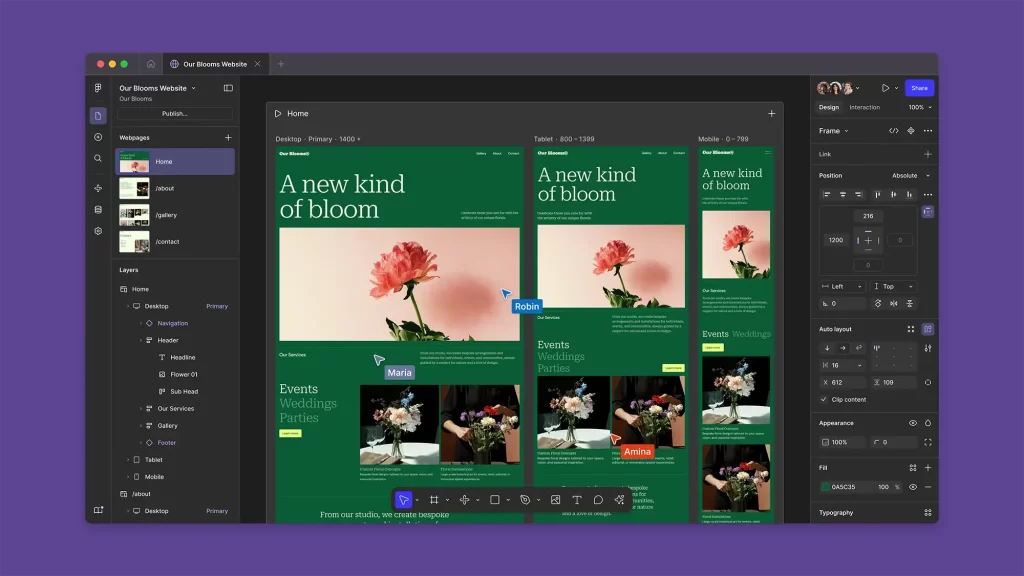
Figma Make: Turning ideas into code - without a development department
Make is an AI tool that generates working prototypes from text descriptions. Whether it's an app concept, microtool or interactive presentation, a simple prompt is enough to visualize a design - and then iteratively refine it by hand. As Product Manager Holly Li put it: "AI is only helpful to a certain extent. You as designers are more powerful."

Figma Draw: Room for illustrative expressiveness
Those who previously had to resort to other programs for vector illustrations can rejoice: Draw brings new tools for freer path editing, dynamic brushes, textures and text paths directly into the design environment. This is particularly exciting for editorial designers, illustrators and all other creatives who work with visual storytelling and prefer a more expressive, analog-inspired visual language, such as structured color gradients or blurring.
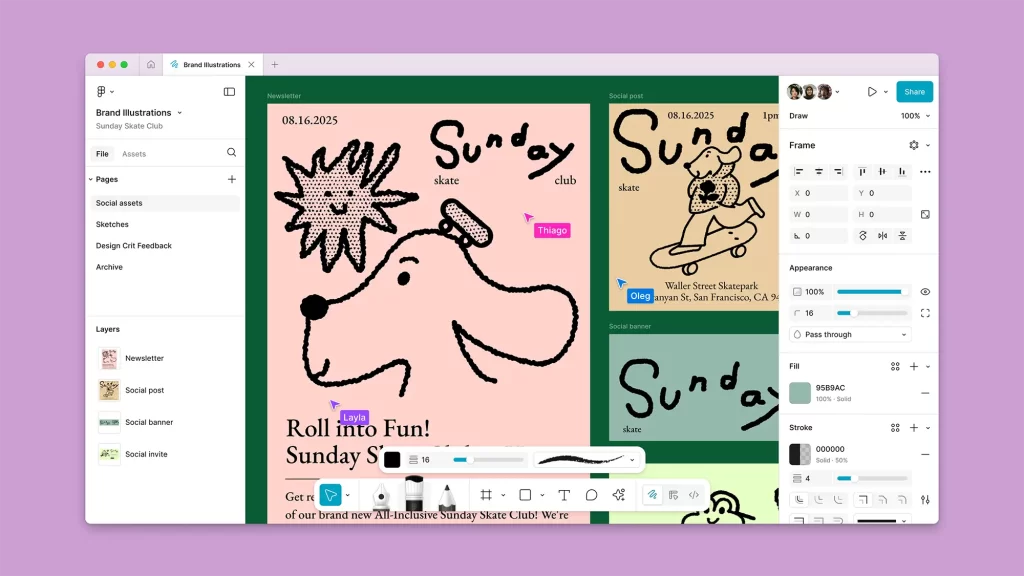
Figma Buzz: Marketing assets with a system
Buzz is aimed at anyone who regularly produces visual assets - whether in the content team, in branding or in corporate communications. Design templates can be defined, varied with AI and rolled out on a large scale - for social media campaigns or promotional materials, for example. The strength: creative precision with maximum reusability, making it easier for non-designers to work with flexible templates.
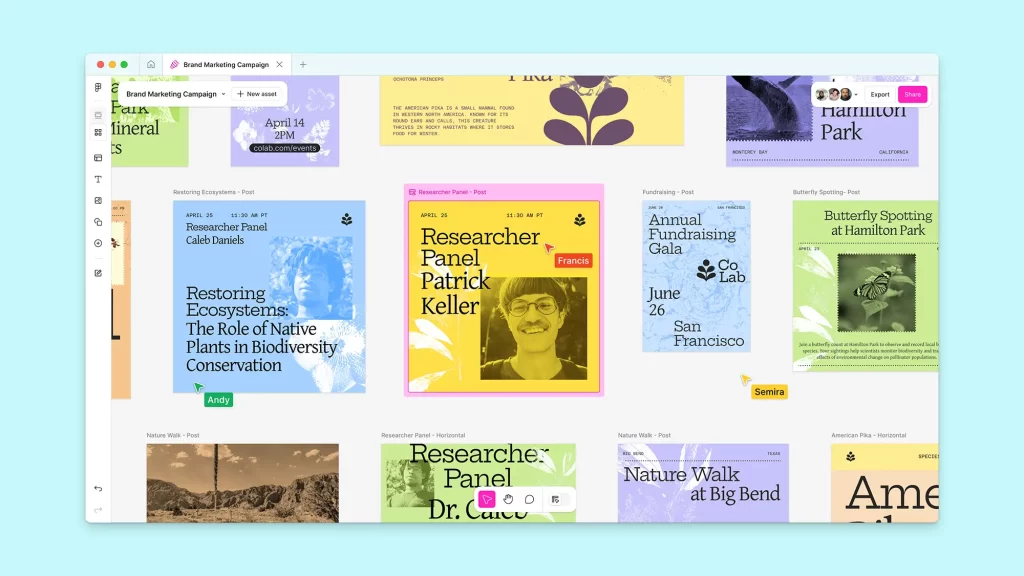
Figma's platform is growing - and so are expectations
The common thread in all innovations? A unified experience in which all players - whether designers or not - can move from idea to realization without friction. Yamashita emphasized that Figma's mission is "not just to move pixels, but to move ideas forward". It is clear that Figma no longer sees itself as a single tool, but as an end-to-end platform - bringing many things under one roof that were previously spread across several software solutions. Users are often skeptical about this, as conversations with Config visitors have shown - whether Figma succeeds in incorporating feedback in an approachable and community-oriented way or "becomes the new Adobe, which is later replaced by an underdog again", as one designer speculates, remains to be seen. But there is a general sense of enthusiasm: for design-oriented practice, the innovations ultimately mean: more expression, more output, fewer breaks. An invitation to think of digital design not only in functional terms, but also more creatively, efficiently and accessibly.
Making design more human in the age of AI
Common sense, critical classification and a more holistic view of the tech world also ran through the presentations: UX Writer Ningfei Ou, for example, called on the design community to resist uniformity, "the sea of sameness" and to join the post-nudge and post-UX skepticism. "Many reflexes remain with us from an early age," he said and pleaded for emotional specificity and linguistic nuances: "Language is infinitely diverse."
Gary Hustwit closed the event in conversation with Figma's VP of Design, Noah Levin, with a cinematic perspective on design and storytelling: "If you're obsessed with something that doesn't exist, there's probably someone who wants it too. Create something you wish existed!"
His words underlined an overarching theme that ran throughout Config London: good design is not just about systems and style guides. It's also always about authorship, questioning intentions - and a whole lot of wondered curiosity.
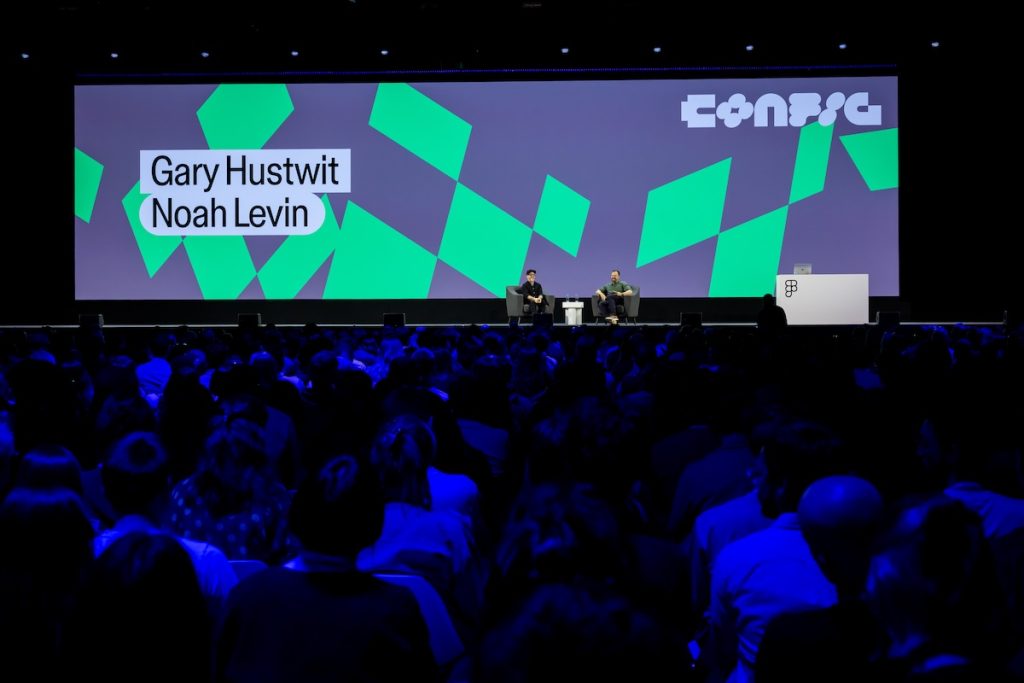
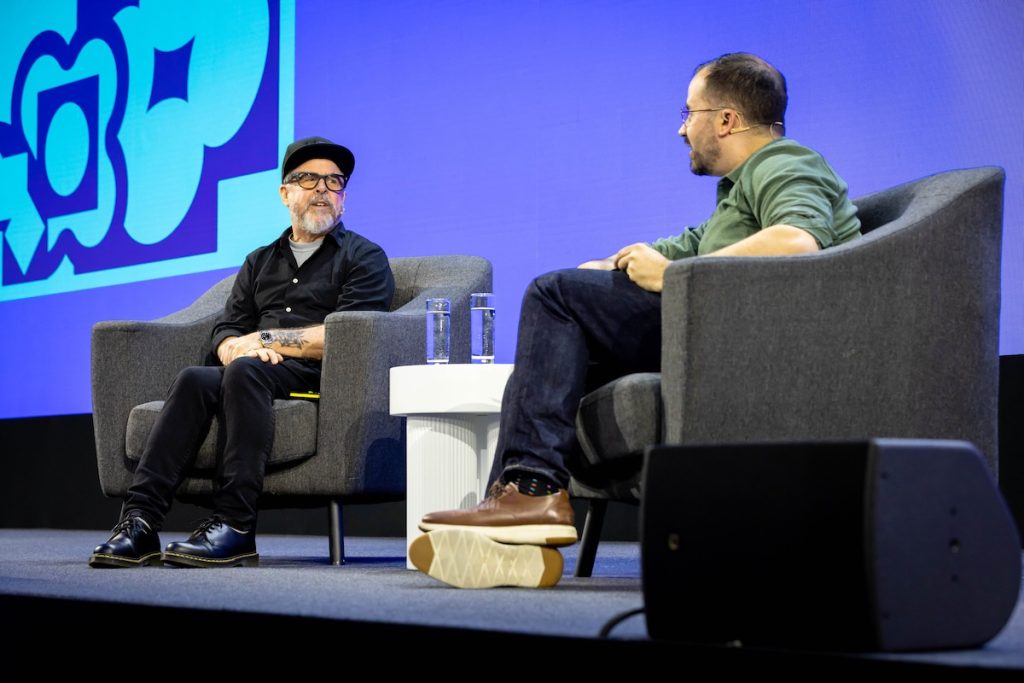
More about Figma's new products here in the blog article by CEO Dylan Field
We also spoke to Yuhki Yamashita and Dylan Field for issue 04.22 "Editorial" for our Collaboration focus, order here
We presented Gary Hustwit and his book "The New York Subway Map Debate" in our issue 06.21 "Information Design", order here
Read more about his film about Brian Eno here on his website

